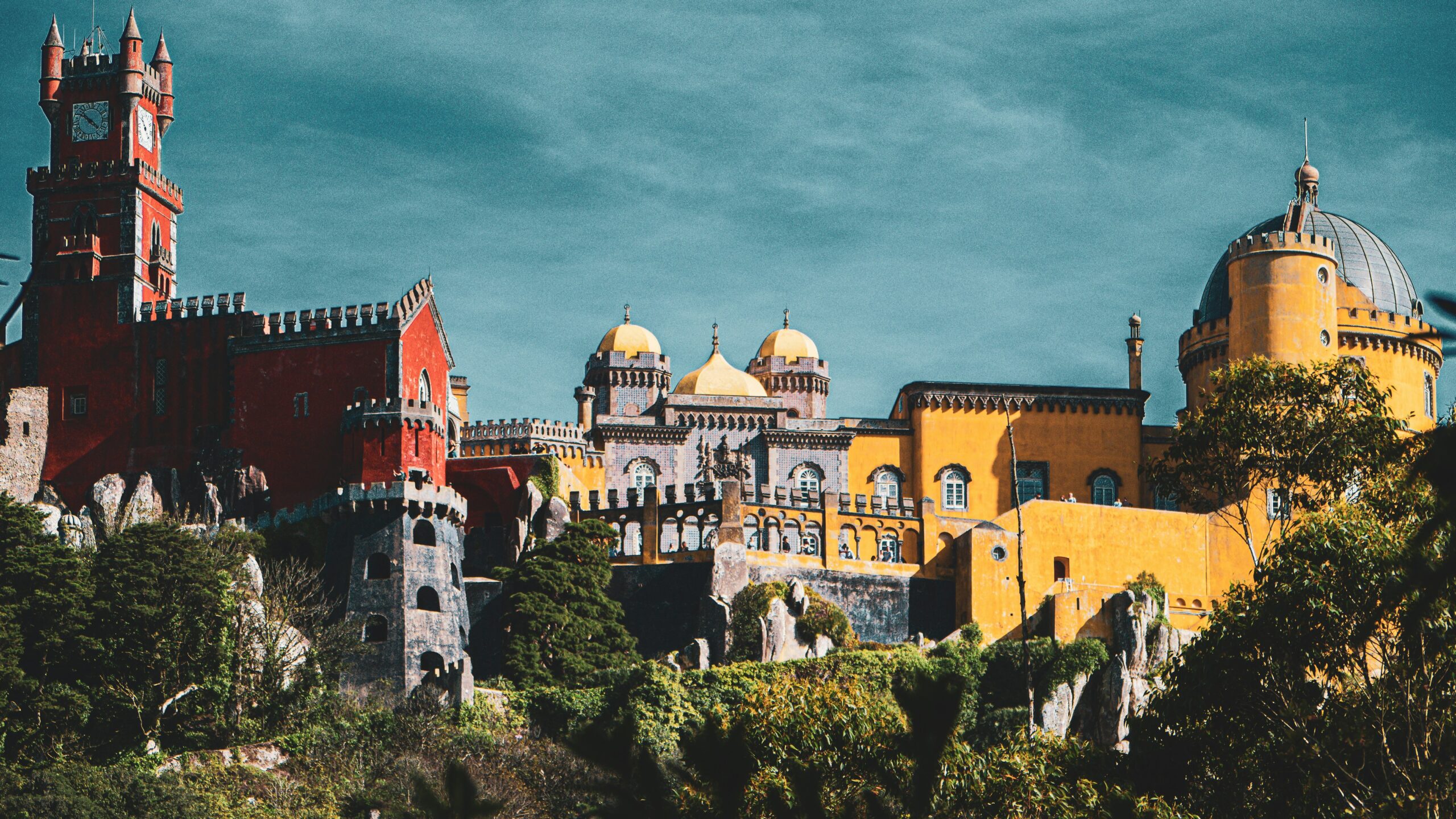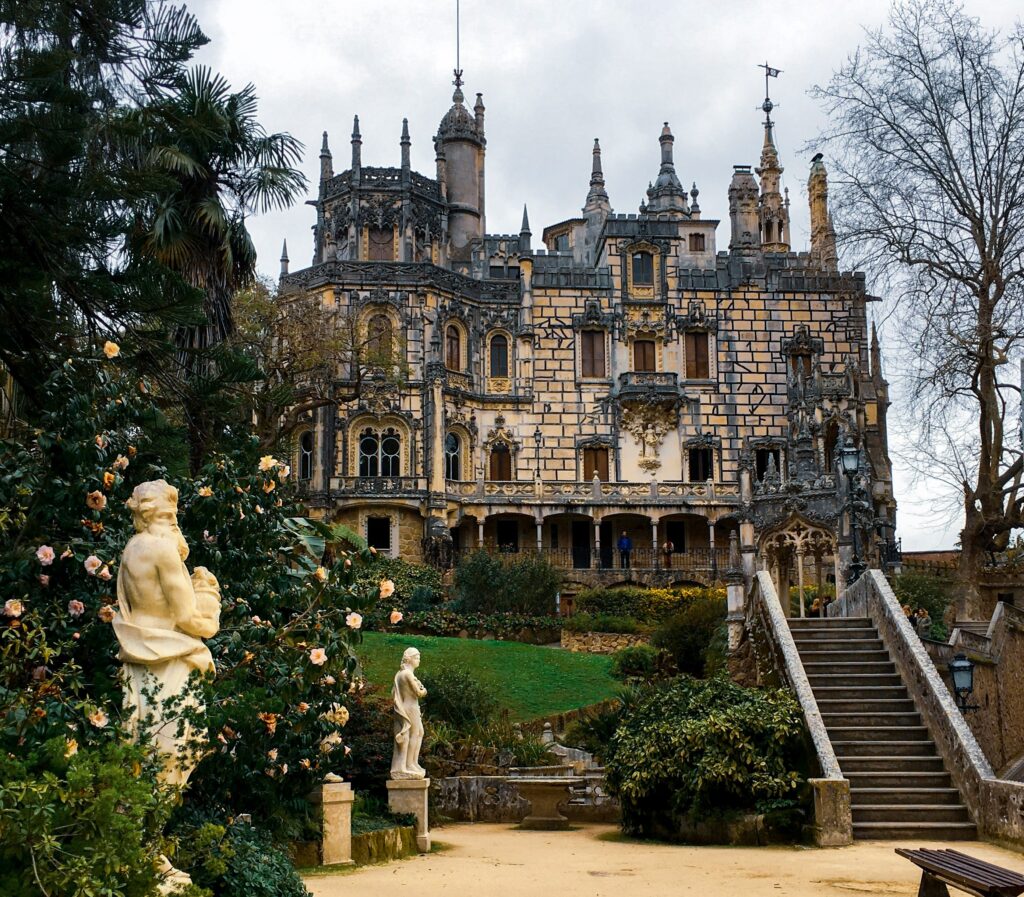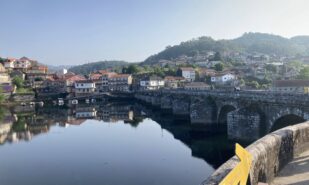Sintra is a place where history becomes myth and myth becomes reality. Here Fernando II talked to dragons, Byron sought immortality in a glass of wine, and the Well of Initiation still calls the brave to an underground shadow dance. Come here not as tourists, but as seekers. Perhaps the mountains will reveal to you their main secret: time in these places is not linear, it sleeps, curled up at the foot of the Pena Palace.
Sintra, Portugal. A journey to a fairytale and back.
A short journey from the sun-drenched boulevards of Lisbon and you find yourself in a realm that seems to have descended from the pages of folk tales. Nestled among the emerald hills rushing to the Atlantic, Sintra is not just a picturesque town; It is an experience, an immersion in a landscape where history, nature and a palpable sense of charm are intertwined. Declared a World Heritage Site by UNESCO in the “cultural landscape” category, Sintra welcomes visitors with quaint palaces, ancient ruins and a unique microclimate that gives us a colourful symphony of exotic flora. It whispers stories from bygone eras and inspires the imagination of all who roam its paths.
In Sintra, as in a Marquez novel, time flows differently. The mountains, shrouded in mist, preserve the memory of the Celts, Moors and romantic kings. Here, each stone is a page of history or a fairy tale, and each palace is a portal to another dimension.
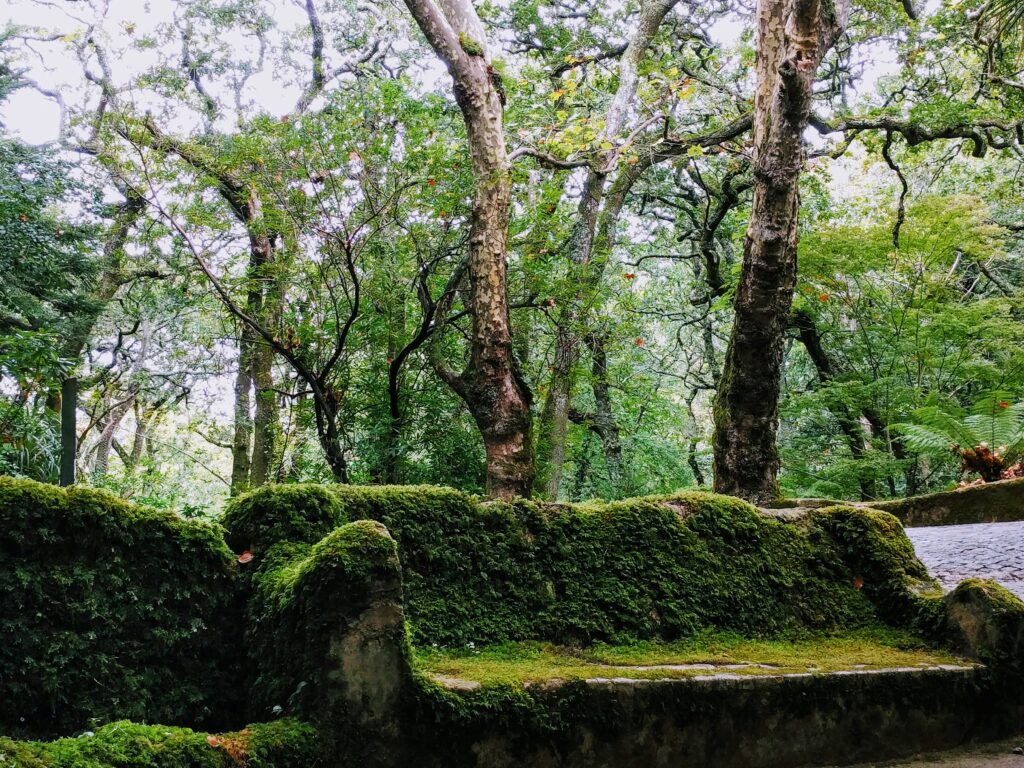
The very air in Sintra seems different. There is a refreshing coolness, a welcome respite from the Iberian heat, nourishing lush greenery that seems almost ethereal. This unique microclimate, the result of the meeting of the hills with the sea, has made it possible to cultivate botanical treasures from all over the globe. The local gardens provide a stunning backdrop to the architectural wonders that make up Sintra’s charm.
Our journey begins at the Palácio Nacional de Sintra, a venerable structure that is the oldest surviving royal palace in Portugal. Its most distinctive features – two conical chimneys towering like giant guardians – have become an iconic symbol of the city. For almost eight centuries, this palace served as a favourite residence of the Portuguese monarchy, each era leaving its architectural imprint here. Moorish influences flow smoothly into Manueline swirls, telling a story of cultural exchange and royal ambitions. Inside its walls, intricate azulejo tiles tell the story of historical events and amaze with their decorative patterns, offering a glimpse into the luxurious lives of those who once lived here.
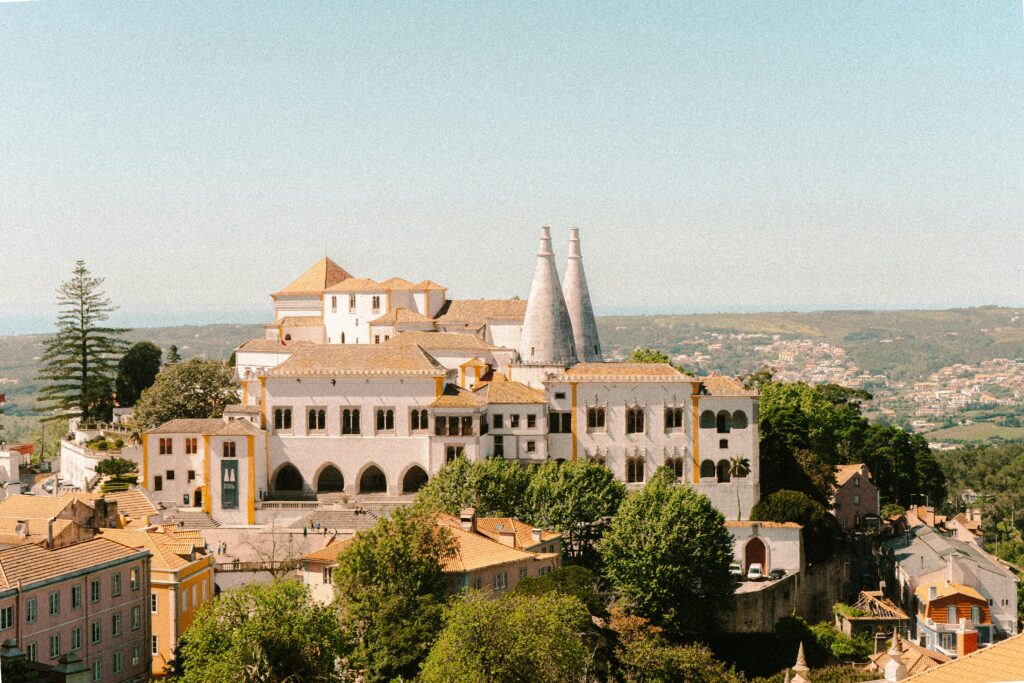
Climbing the winding roads deep into the hills, we arrive at the breathtaking Palácio da Pena. A jewel of nineteenth-century European Romanticism, this vibrant castle, designed by King Fernando II, is spectacularly perched on top of a hill in a kaleidoscope of yellow, scarlet, lilac and orange against a backdrop of dense, luscious greenery and sky blue. Built on the ruins of an old monastery, the Pena Palace is a fantastic mixture of architectural styles, with Gothic, Manueline, Moorish and Renaissance elements merging in a display of exuberant eclecticism.
The surrounding Pena Park, a testament to Fernando’s artistic vision, is a vast botanical garden teeming with exotic trees and plants brought from the far corners of the earth. Walking along its winding paths past hidden grottoes, serene lakes, and quaint gazebos, it’s easy to see why Byron was moved to the point of calling Sintra “the glorious Eden.” The panoramic views from the palace’s terraces, stretching across the Sintra-Cascais Natural Park to the distant Atlantic, are simply mesmerizing, especially when the morning mist billows, giving the stage an ethereal charm.
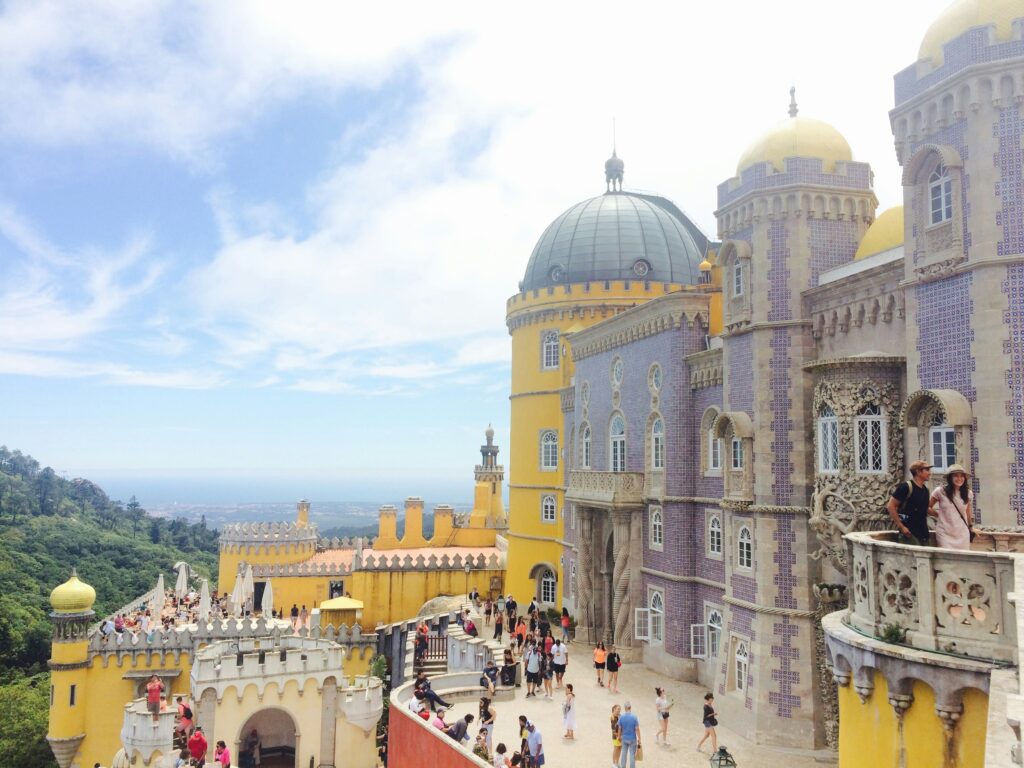
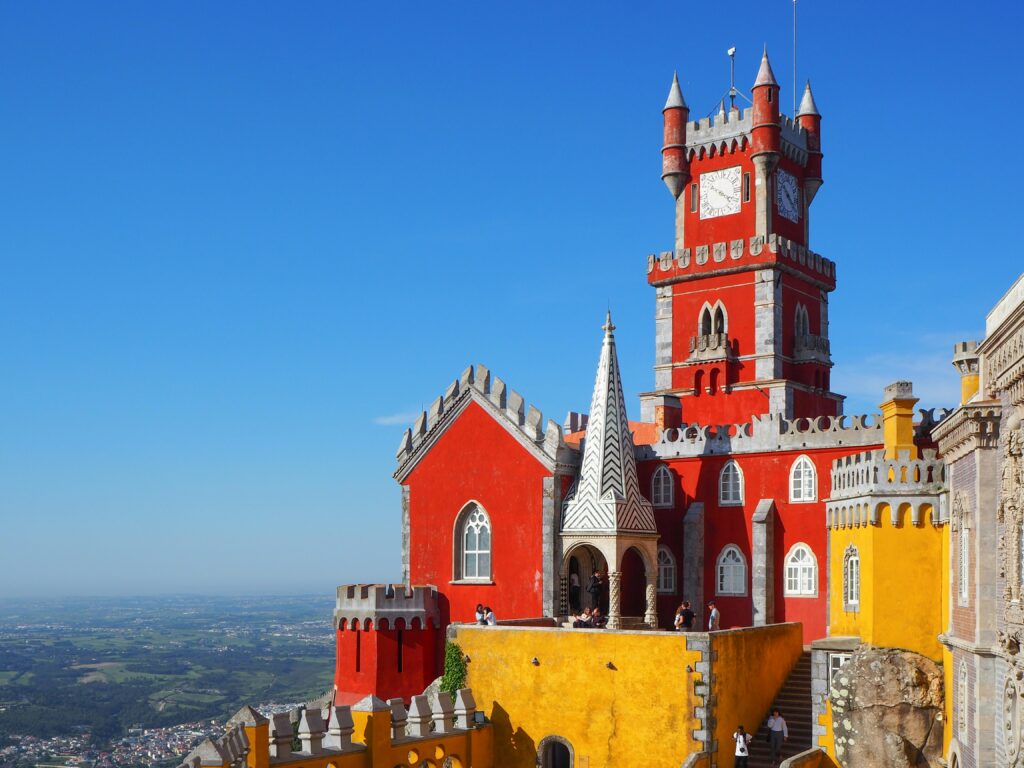
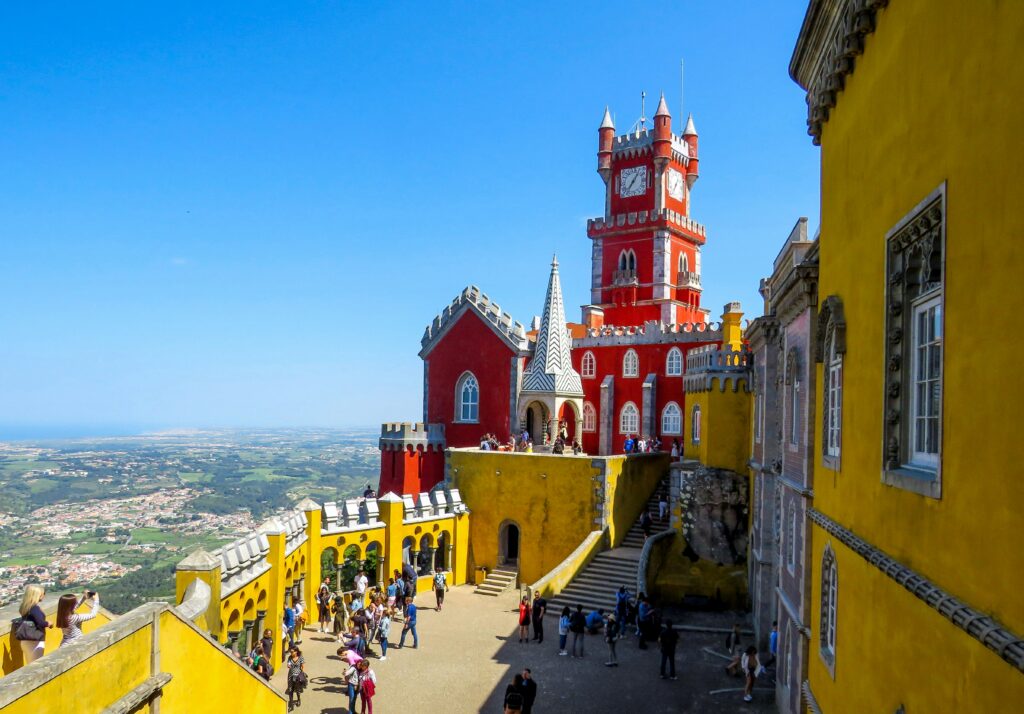
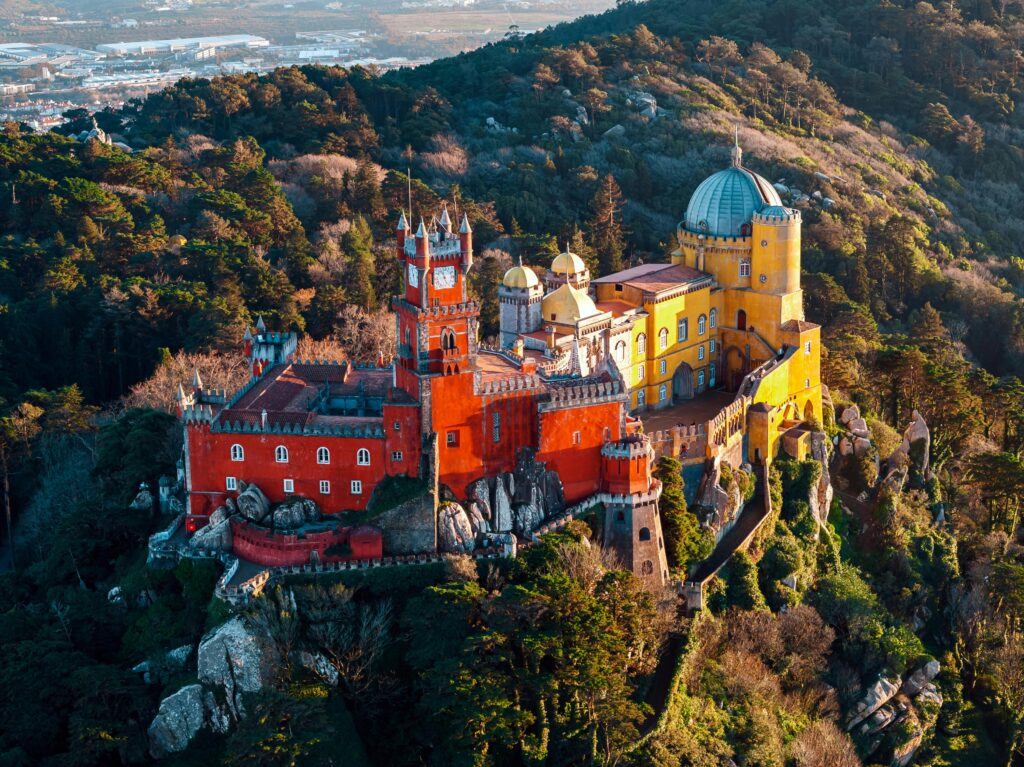
King Fernando II, often referred to as the Artist King, played a key role in shaping Sintra’s romantic landscape. His vision extended beyond the construction of the Pena Palace to the creation of the surrounding park, a meticulously landscaped wilderness filled with exotic flora, tranquil lakes, cascading fountains, and bizarre architectural whims. Fernando’s artistic sensitivity turned Sintra into a real fairytale scenery, a source of endless inspiration for artists, writers and poets. Its heritage is captured in the vibrant colours and fantastic landscapes that define the unique character of the city.
In 1838, he bought the ruins of a 16th century monastery and in 16 years created a masterpiece of romanticism. The architect Ludwig von Eschwege, inspired by the castles of the Rhine, mixed Gothic, Moorish and Manueline styles. Inside there are halls with trompe l’oeil frescoes: painted books on shelves, marble columns that turn out to be wood. Fernando believed that the palace was a bridge between the worlds. He died in 1885, but guests swear that his shadow still wanders around the Giant’s Terrace, admiring the clouds.
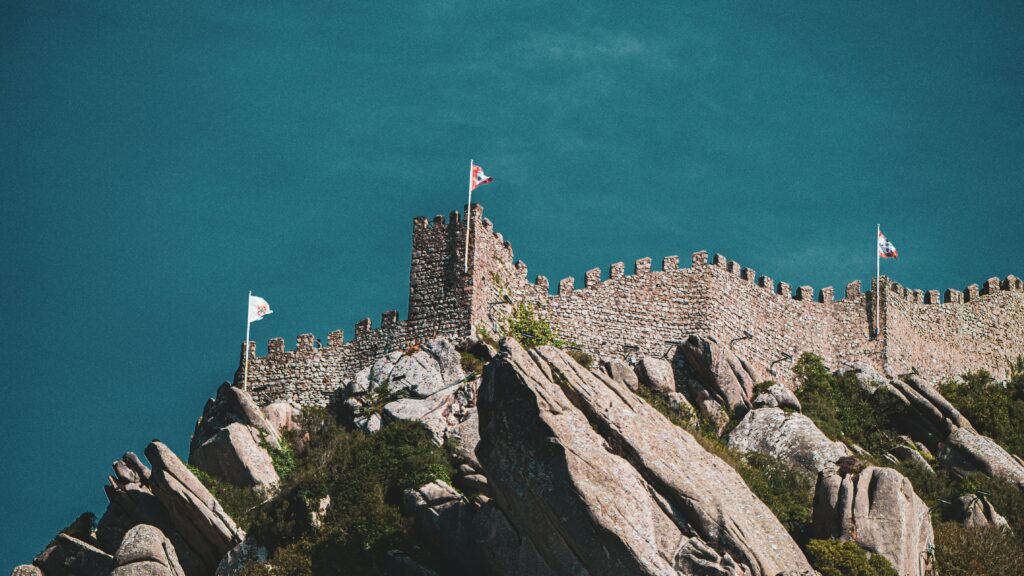
To experience the ancient past of Sintra, you must visit the Moorish castle (Castelo dos Mouros). Dating back to the 9th century, the period of Moorish rule in the Iberian Peninsula, this formidable fortress snakes along the crest of a strategically important hill with majestic views of the surrounding area. Walking along its weather-beaten walls, you can almost hear the echoes of past centuries, the clashing of swords and the whispers of ancient languages. The strategic importance of this castle is evident in its powerful fortifications, which represent a tangible link with a significant period in the history of Portugal. Its towers overlook the city of Sintra, the lush hills and, on a clear day, the vast expanse of the Atlantic Ocean.
Long before the Moors and Christians, the Celts erected a sanctuary on the hilltop. Their spirits still roam among the ruins of the Moorish Castle, whose walls, contrary to the name, grew on ancient Celtic foundations. Archaeologists found traces of rituals here: stone altars where priests brought gifts to the gods of wind and rain. It is said that on the full moon, the clang of Celtic swords can be heard at the walls – an echo of the battles with the Romans, who came to erase their culture.
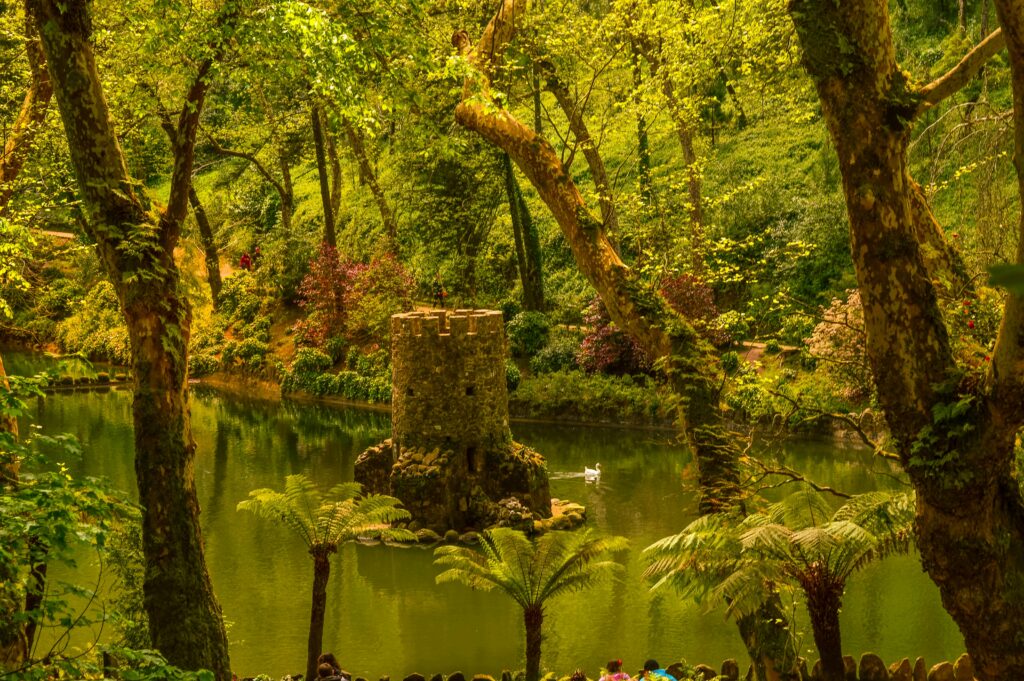
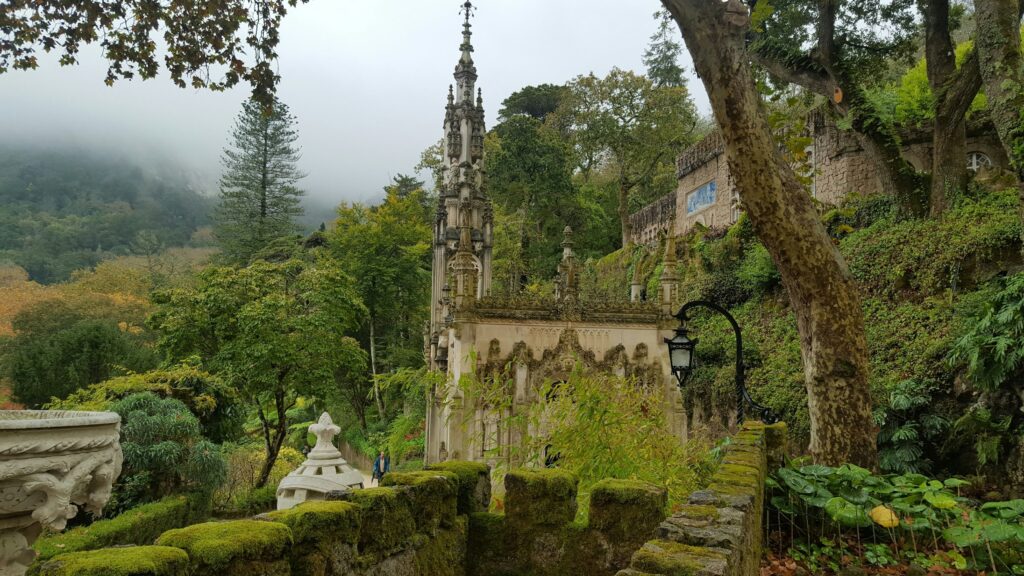
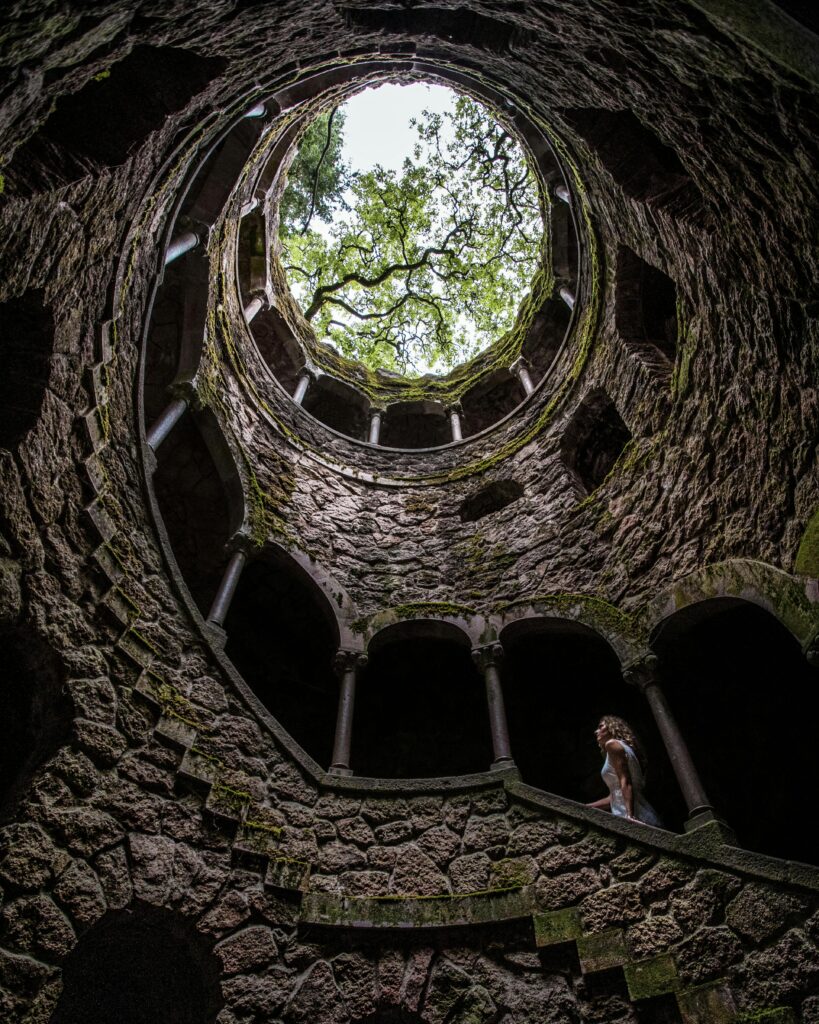
Perhaps the most mysterious of Sintra’s attractions is Quinta da Regaleira, a mystical estate shrouded in symbolism and intrigue that transports you to the pages of a Dan Brown novel. Its intricate gardens are a labyrinth of hidden passageways, grottoes, and esoteric architecture, culminating in the famous Well of Initiation.
This striking nine-storey inverted tower with a 27-metre-high spiral staircase reaching deep into the ground, which was supposedly used for Masonic or other secret rituals, has 9 spans with 15 steps each – a reference to the 9 founders of the Templar order and the 15 steps of Dante’s purgatory. Neophytes were lowered into the well blindfolded, with a sword to their hearts. At the bottom, under the Templar cross, they wandered in a labyrinth, looking for “light” in the tunnel leading to the waterfall. The survivors became “initiates”. The eight-pointed star on the floor is the sign of the Rosicrucians. The spiral is a metaphor for death and rebirth, as in the myths of Isis and Osiris.
Nearby is the Carvalho Monteiro Palace, where each room is a cipher. It was created by the Italian architect Luigi Manini, who worked on the Quinta da Regaleira for 14 years. In the Chapel of the Holy Trinity, the altar is hidden behind a mirror, and in the frescoes of Adam and Eve, the serpent has the face of the owner himself.
The symbolism that permeates all of the Quinta, from Templar crosses to alchemical references, invites reflection and speculation, adding a layer of mystery that captivates the imagination. Exploring its dark tunnels and deciphering its enigmatic iconography is an adventure in itself.
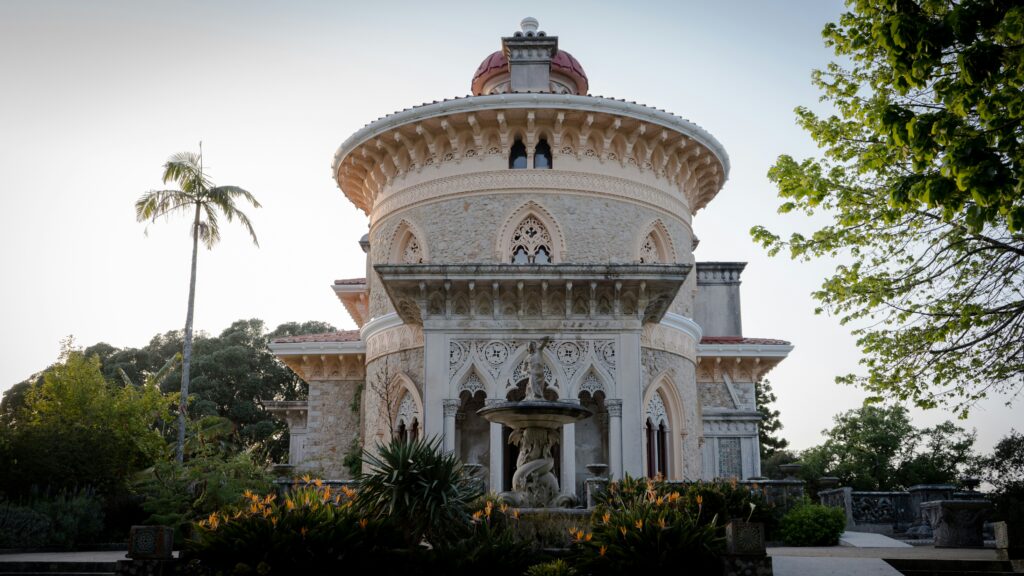
As we delve into the green embrace of Sintra, we discover the serene beauty of Monserrate Palace. This nineteenth-century palace, a striking example of romantic architecture, harmoniously and exotically combines Arab, Neo-Gothic and Indian influences. Commissioned by the wealthy English baronet Sir Francis Cook, Montserrat was the embodiment of the fascination with the Orient for the people of that era. The surrounding landscape park is quite impressive – a carefully curated collection of plants from around the world, creating a serene oasis of natural beauty. The elegant stonework of the palace, the intricate details of its arches and domes, and the tranquil atmosphere of its gardens offer a different, more contemplative perception of the romantic spirit of Sintra.
Finally, for a glimpse into a more austere past, the Convento dos Capuchos offers a stark contrast to the splendour of Sintra’s palaces. Located deep in the forest, this 16th-century Franciscan monastery is notable for its simplicity and unity with nature. Built right among the granite boulders using cork as insulation material, the monastery exudes a deep sense of spirituality and asceticism. Small, modest cells and common rooms are a touching reminder of a life devoted to contemplation and renunciation of worldly pleasures. Moss-covered rocks and a quiet atmosphere create an almost primal feeling, transporting visitors back to times of silent devotion. In the Capuchin Monastery, a woman in white cries at night, Inês de Castro, the mistress of King Pedro I, who was executed on the orders of his father.
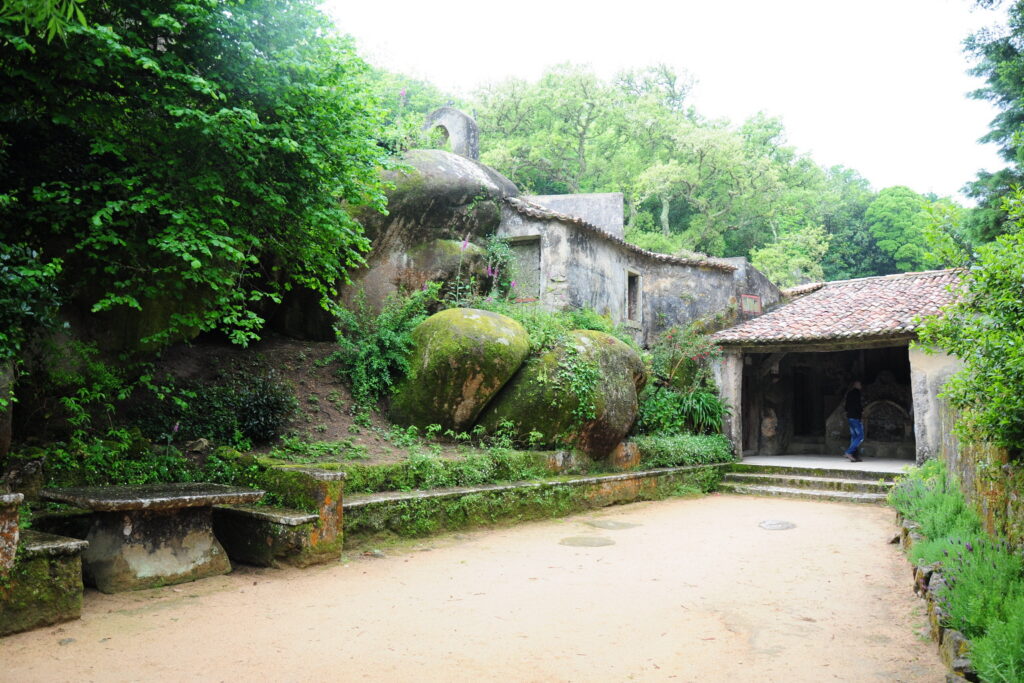
Apart from its architectural wonders, Sintra is a place where ancient beliefs still echo. The Roman name Mons Lunæ and the probable Celtic connection to Cynthia, the goddess of the moon, hint at a long-standing veneration for the mystical power of these hills. Frequent fogs enveloping the landscape, unusual rock formations and dense emerald foliage contribute to the creation of an atmosphere rich in folklore and legends. Tales of fairies and other mythical creatures that dwell in the forests of Sintra have been passed down from generation to generation, highlighting the enduring sense of magic that permeates the region. At the foot of Mount Luna lies a boulder with Celtic runes. They say that if you go around it three times counterclockwise, your wish will come true, but the price for it will be equal to the wish.
Legends say that there is a network of passages under Sintra leading to the treasures of the Templar order. In 1945, two tourists disappeared in there only to be found a week later, by the sea, whispering in Latin.
Sintra’s geographical location also adds to its special charm. Situated just a stone throw away from Cabo da Roca, the westernmost point of continental Europe, the city feels like a gateway to the vastness of the Atlantic. The dramatic cliffs of Cabo da Roca, where the land abruptly drops into the ocean, have inspired poets and dreamers for centuries, embodying a sense of the end of a journey and the beginning of the unknown. This proximity gives Sintra the feeling of being at the end of the world where the earthly meets the boundless maritime. On the way to Cabo da Roca, some travellers sometimes see the House of the Wind. But not everyone and not every time. This is a local mystery and a mysterious legend.
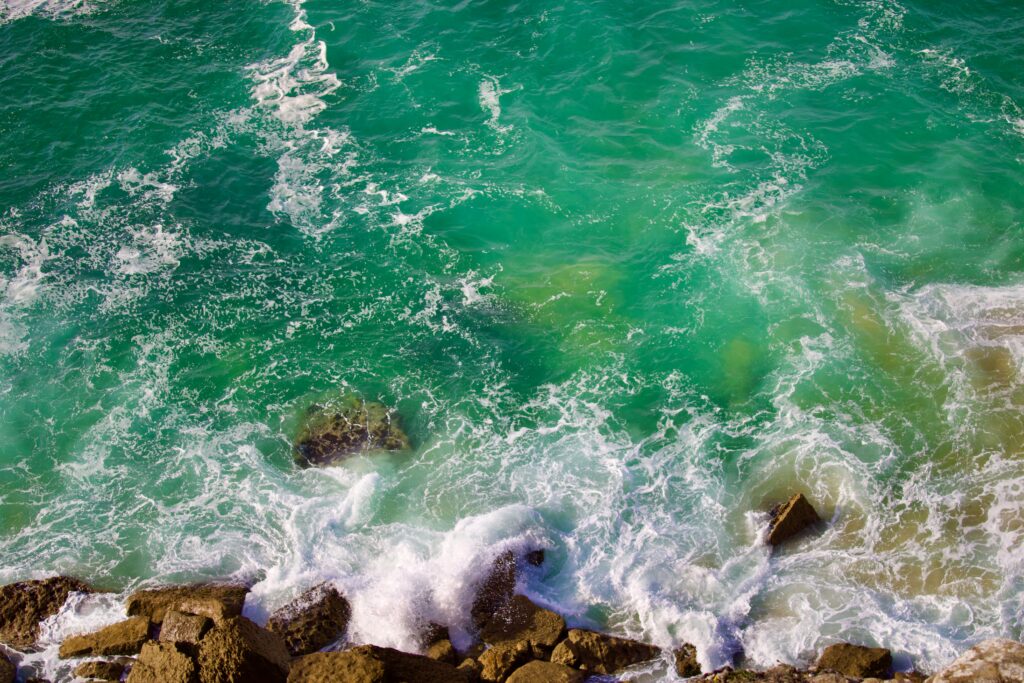
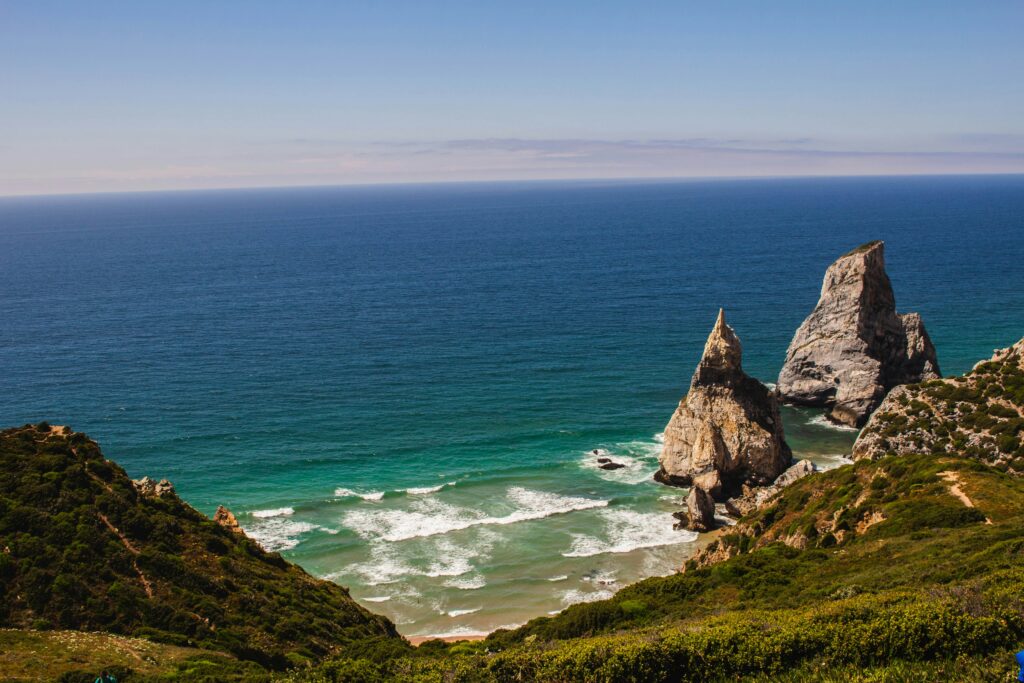

Sintra’s romantic appeal captivated the imagination of Lord Byron, whose expressive poems in Childe Harold’s Pilgrimage immortalised her beauty to the English-speaking world. His description of Sintra as the “glorious Eden,” the “wild Sintra” full of “palaces and gardens rising from the forest,” painted a vivid picture that attracted the attention of European aristocracy and artists throughout the 19th century, cementing its reputation as a must-visit destination for those seeking beauty and inspiration. In 1809, Byron spent weeks here hiding from scandals. In the Lawrence Tavern (one of the oldest in Europe, open since 1764), he wrote lines about “mountains dressed in azure” and drank port wine with local smugglers. Legend has it that the ghost of the poet sometimes appears at the Quinta da Regaleira Palace, whispering poems in forgotten languages.
Thus, Sintra is not just a collection of beautiful buildings, but a living tapestry woven from history, mythology and the enduring power of nature. It is a place where the echoes of royal footsteps mingle with the rustle of exotic leaves, where ancient stones whisper their secrets to the wind, and where the imagination soars through breathtaking landscapes. For the traveller looking for more than just a postcard destination, Sintra offers a total immersion, a journey into a realm where fairytale landscapes meet ancient echoes, leaving an indelible mark on the soul long after the winding roads are out of sight. This place is perfect for someone who wants to be alone with the world, take a deep breath, wander freely, and let the magic of Sintra weave its spell.

